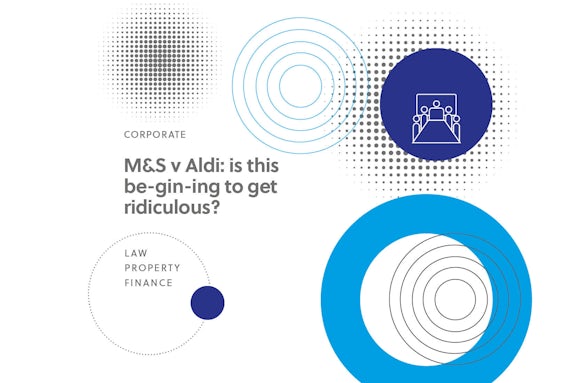Not satisfied with the battering they took from the Aldi Twitter team earlier this year over cakes, Marks and Spencer are suing Aldi again.
In true festive spirit, M&S is suing Aldi over an alleged copycat gin bottle. Last year M&S released a festive, flavoured gin in light-up bottles. The two flavours available last year were big hits and quickly sold out in many stores. There was also much coverage on social media with everyone taken by the novelty bottle. For this festive season, M&S has brought back the gin. It is now sold in four different flavours, each in a different version of the light-up bottle. Aldi has now released its own Christmas gin, including a light-up bottle.
Both M&S’ and Aldi’s bottles are a clear, bell-shaped bottles with a light fitting, gold leaf flakes inside, and a winter scene printed on the outside.
What is a registered design?
Obtaining a UK registered design grants the exclusive right to use the design (and variations on it) for 25 years.
The protection offered extends to the appearance of something with an underlying function. In this case, it protects the appearance of the combination of features listed above, but doesn’t protect the concept of a container to hold gin. A registered design needs to relate to a new idea. If you are a whisky producer, you could not register what most people consider to be a standard whisky bottle; but you could register a glass bottle with an elaborate, 3D glass stopper in place of the screw-top or cork stopper.
What do M&S need to prove?
Because the action relates to a registered design, M&S does not need to prove that Aldi intentionally copied the design. M&S needs to prove that Aldi put a gin on the market which creates the same overall impression as its product.
If M&S can prove that, then there are a handful of defences upon which Aldi can rely. These defences are generally limited to use before the design was registered and for activities without a commercial gain, such as teaching.
This is what makes a registered design right an effective means of protection for a product. Although trademarks offer protection for names and logos, a registered design offers protection for a particular product or line of products by protecting its overall impression. The registered design may or may not incorporate aspects of a trademark. In particular, registered designs can protect aspects of appearance which relate to the underlying functionality of a design in a way that trademarks cannot. Nor is the protection offered by a registered design limited to a particular sector or service class. Registered trademarks generally offer protection only to the classes against which they are registered, or closely related classes. If you are contemplating registering a trademark, the Colin the Caterpillar case is worth considering.
If you are bringing a new product to market, you should seriously consider applying for a registered design. At £50 per application, it is likely to be money well spent – even for small businesses. You should still take advice on how to protect your product. The most effective protection is likely to involve a combination of design rights, trademarks and confidential information.
If you would like further information on the topic discussed in this blog, please contact Derek Hamill by email: dhamill@gilsongray.co.uk or by phone: 0141 530 2022 / 07973 924 333.
The information and opinions contained in this blog are for information only. They are not intended to constitute advice and should not be relied upon or considered as a replacement for advice. Before acting on any of the information contained in this blog, please seek specific advice from Gilson Gray.








